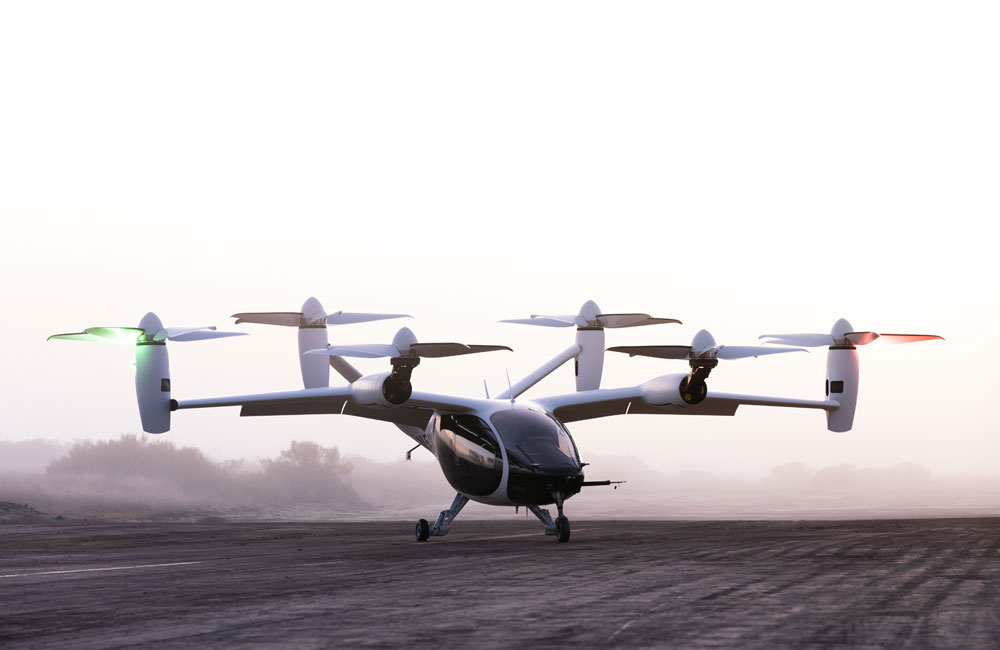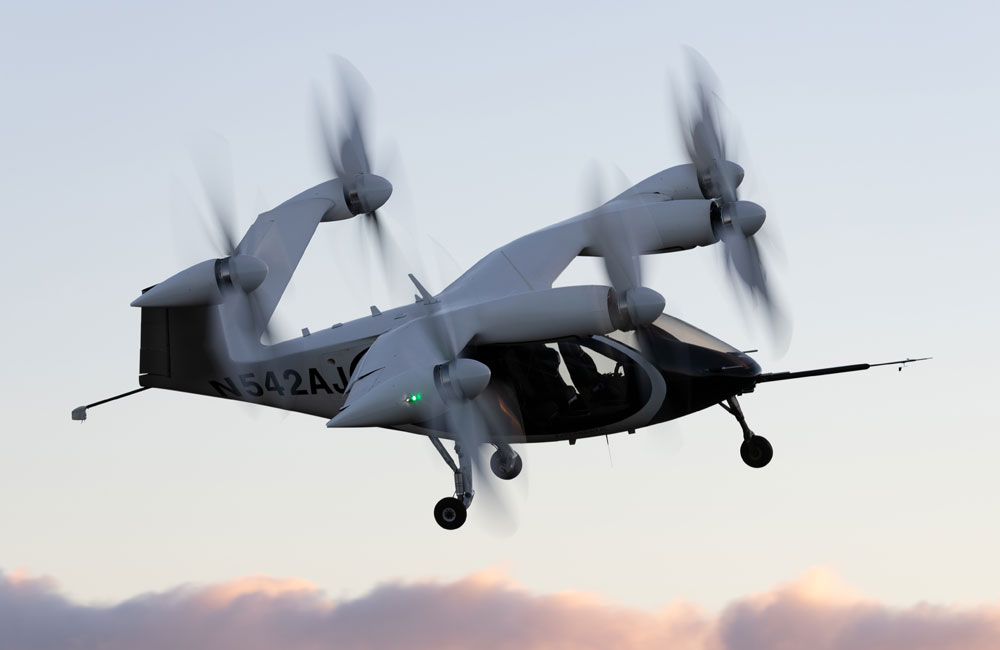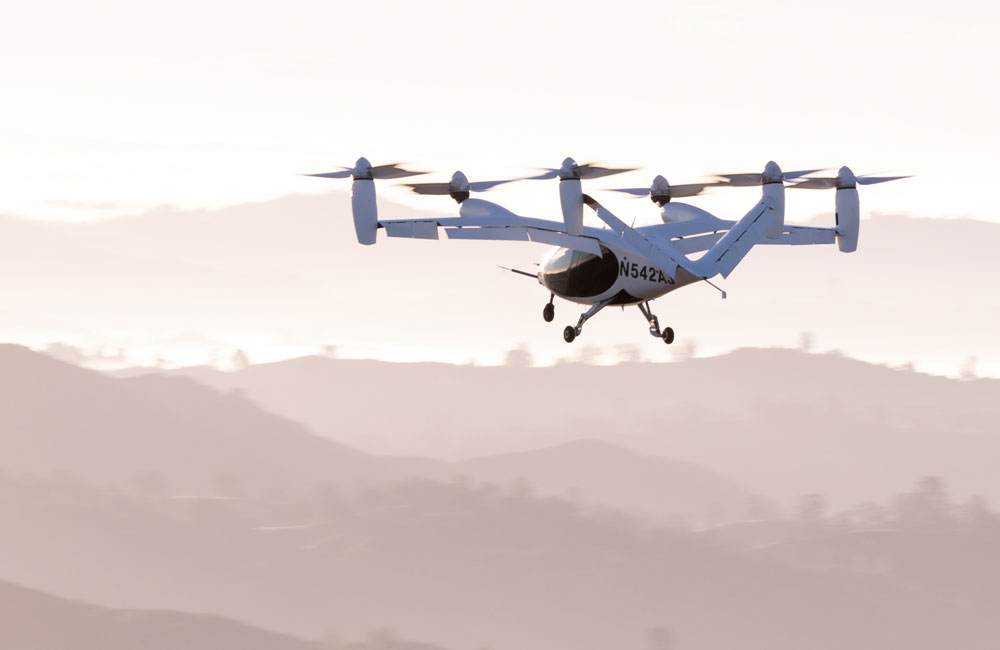
One of the aircraft operated by Joby Aviation.
Credit: Joby Aviation
While the aviation industry sustained a huge decrease in the demand for air travel due to the ongoing impacts of the novel coronavirus, travelers are returning to the skies as the distribution of COVID-19 vaccines accelerates around the nation and world. The uptick in air travel actually began on the air charter side, as limited availability of flights from commercial carriers and social-distancing concerns led travelers to explore other options. Charter traffic experienced a major surge in recent months to the extent that it has nearly rebounded to pre-pandemic levels, according to the latest data released by FlightAware.
Though the aviation industry as a whole is still far from a making full recovery, the business continues to improve, and in a post-COVID-19 environment, the industry will likely start to look quite different. Among the changes on the horizon are air taxis and autonomous modes of transportation, both of which highlight a promising new area of development for the future of aviation.
In December 2020, Uber Technologies invested $75 million in Joby Aviation, a transportation company developing an all-electric, vertical take-off and landing passenger aircraft, which it intends to operate as early as 2023. This investment was part of a broader transaction involving the acquisition of Uber Elevate – Uber’s urban air mobility initiative – by Joby Aviation and an expanded partnership between the two parent companies. This partnership will create integration between ground and air travel for future customers by combining their respective services into each other’s apps.
Uber Elevate was established in 2016 and has since played an important role in laying the groundwork for the aerial ridesharing market by bringing together regulators, civic leaders, real estate developers and technology companies around a shared vision for the future of air travel. Moreover, the company developed a unique set of software tools that build on more than a decade of experience enabling on-demand mobility, which has been invaluable to Joby Aviation as it formulates plans for commercial launch. Its zero emissions aircraft can transport four passengers and a pilot, flying up to 150 miles on a single charge and can cruise at speeds of 200 mph. The aircraft is also designed to help reduce urban congestion and accelerate the shift to sustainable modes of transit.
If air taxi services like Joby Aviation’s model take off and airports around the globe become more open to these alternative modes going forward, then there would be a rapid need for more trained experts in operations and maintenance of these electric vertical take-off and landing aircraft (eVTOLs), in addition to autonomous vehicles. That could prove challenging given the existing shortage of skilled professionals needed to fill a myriad of openings in the aviation field.
Here in the St. Louis area, Southwestern Illinois College (SWIC) remains committed to helping address these shortages by offering Aviation Degree and Certificate programs. SWIC currently has A.A.S. Degrees in Aviation Pilot Training for both Airplanes and Helicopters, Aviation Maintenance (FAA Airframe and Power Plant Certificate), Aviation Management and Aircraft Dispatcher Certificate programs. SWIC also has the SIU Carbondale Extended Campus B.S. Degree in Aviation Management on the Belleville campus that runs on a weekend format. Students can save more than 40% of the degree costs by completing the program on the SWIC campus. Current plans include the development of an Avionics Certificate program and Unmanned Aerial SystemsVehicle (Drone) Certificate program.
“Aviation is continuing to grow and large numbers of qualified professionals are needed to fill the ever-expanding demand throughout the region, the country, our military and the world,” said Keith Mueller, Coordinator of Aviation Pilot Training/Aviation Management at SWIC. “With travel now spiraling back up and airline bookings expanding at a significant rate, now is the perfect time for anyone planning a career in aviation to join a program and become an aviation professional of tomorrow.”
Also close to home, Saint Louis University’s Parks College of Engineering, Aviation and Technology has forged a path of innovation by developing future-focused programs for engineers and aviators to address current and future needs of the industry and society. Srikanth Gururajan, Associate Professor for the Aerospace and Mechanical Engineering Department, has extensive experience in the design and construction of the unmanned aerial vehicle (UAV) platforms. This is reflected in his teaching interests that include student aerospace design competitions, which he believes are ideal avenues for students to express their creativity while complementing the knowledge gained in the classroom and promote greater collaboration and learning across disciplines.
Every summer, Professor Gururajan and a team of students travel to the Patuxent River Naval Air Station (NAS) in St. Mary’s County, Maryland, for the Student Unmanned Aerial System (SUAS) Competition, hosted by the Seafarer Chapter of the Association for Unmanned Vehicle Systems International (AUVSI). The competition serves to stimulate and foster student interest in UAS and is designed to engage students in systems engineering and create complete solutions to complex, real world problems. During the competition, student teams design, develop and fabricate an unmanned aerial system capable of completing specific autonomous operations, including takeoff, navigation, sense, detect and avoid (SDA) and more. Despite the cancellation of the event the last two years due to the COVID-19 pandemic, students are eagerly preparing for next year’s competition and keeping busy in the classroom with other exciting tasks, such as utilizing virtual reality to fly in Professor Gururajan’s AirCRAFT lab.
Despite the pandemic, as new technologies continue to be developed with the recent growth of urban passenger-carrying, autonomous or semi-autonomous aircraft, air travel may be on the cusp of a major transformation.


